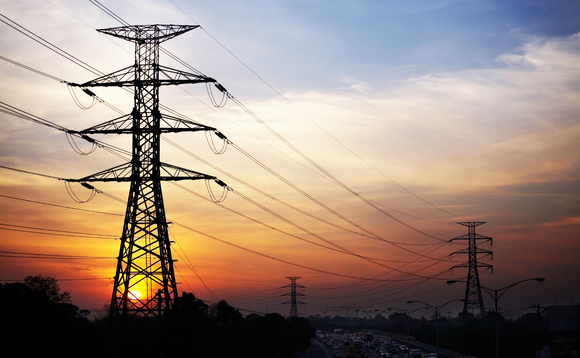
Infrastructure: Big market, slow progress

Indonesia’s substandard infrastructure represents a huge investment opportunity and the government is taking steps to ensure foreign players can participate. However, returns will only come to those who wait
How much money is required to keep the lights on in Indonesia? According to Perusahaan Listrik Negara (PLN), the country's state-owned electricity provider, a total of $96.2 billion must be invested between 2011 and 2020 to meet the demand created by average annual GDP growth of 7%. This would see an additional 55,000 megawatts enter the power grid, enough to supply electricity to every household in Indonesia, up from 65% today.
Unfortunately, PLN can offer less than two thirds of both the capital and the power. The remainder must come from independent power producers (IPPs), who must in turn find their own sources of investment.
Against this backdrop, a consortium including Saratoga Capital and International Finance Corp. (IFC) recently agreed to pay $112 million for a majority stake in Medco Power International. The company's owner, oil and gas exploration specialist Medco Energi, agreed to bring in new investors because it recognized the need for fresh capital to develop small IPPs to serve areas that fall outside the main Java-Bali grid.
"A lot of the other islands as well as smaller businesses like coal mines have started to see if they can do an IPP in order to provide a reliable source of electricity for themselves and then sell the remainder to the local grid," says Pam Bracey, head of private sector operations for Indonesia, Asian Development Bank (ADB).
The long road
IFC expects Medco Power's expansion costs to reach $430.5 million, 70% of which will be financed through loans at project level, with the remainder coming in equity.
The fact that a project financing package can be devised by a group of independent commercial stakeholders and executed in good faith speaks volumes for the progress Indonesia has made in driving infrastructure investment. But the Medco Power is a drop in the ocean given Indonesia spent a decade recovering from the Asian financial crisis and spent little on transport and utilities.
The government's five-year national development plan for 2010-2014 projects that INR1.9 trillion ($210 billion) is required in infrastructure investment. It wants one third of this to come from private sources, although it may ask for more. Deyi Tan, ASEAN economist at Morgan Stanley, estimated last year that $250 billion is more realistic investment level. This means infrastructure spending could reach 5.9% of GDP by 2015, up from 3.9% in 2009.
While steps have been taken to facilitate foreign participation in the sector and various groups have expressed interest, they aren't about to plunge in. "We are still a long way from a position in which foreign investors can make informed decisions on projects," says David East, a transactions and restructuring partner with KPMG Indonesia.
Power has seen some traction because it is one area in which the policy framework, though not perfect, is more or less complete. This, combined with the massive end-user demand, led to Standard Chartered Private Equity's (SCPE) investment last year in Navigat, an Indonesia-focused energy company that installs and operates power plants nationwide.
"Power is investible today," says Alastair Morrison, SCPE's global head. "There are some market issues around developing the gas segment, but you don't have to wait for regulators."
Yet risks do remain, notably concerns about PLN, the principal buyer of electricity, making good on its power purchasing obligations. According to Standard & Poor's, policies to reduce the monopoly of state-owned enterprises over infrastructure haven't been properly implemented. IPPs in particular have struggled due to a lack of an automatic tariff-adjustment mechanism and delays in tariff approvals. Despite a hike in 2010, tariffs remain among the lowest in the region and often lag generation costs.
Policy progress
Two areas where policies are expected to bear fruit are land acquisitions and public-private partnerships (PPPs). Late last year, Indonesia's parliament passed the land reform legislation, which should enable the government to force through purchases of land for infrastructure projects where in the past it has been thwarted by disagreements with private owners. Implementation regulations have still to be approved, but the law should clear the way for more roads, ports, airports and power plants.
A clearer PPP framework complements land reform, effectively making it easier for foreign investors to participate in projects to be developed in these newfound spaces. Jon Lindborg, country director at the ADB's Indonesia resident mission, cites the creation of the Indonesia Infrastructure Guarantee Fund (IIGF) as a particular achievement.
The fund, which is fully state-owned but operates independently and has its assets ring-fenced, is intended to act as a credible guarantee provider, protecting the interests of infrastructure investors. It is hoped the fund will bring in other parties to provide capital support and expand guarantee coverage.
"The IIGF has done a good job in setting out the risk allocation framework for a range of sectors," says Lindborg. "If you want to invest in a water project you can look at the risk allocation table, and find out the risk provision and what the government is willing to take on."
The first project backed by the IIGF was the Central Java IPP, which will be one of the largest coal-fired power plants in Asia with a capacity of 2,000 MW. A consortium comprising of J-Power, Itochu Corporation and Adaro Power won the bid for a 25-year contract to build, own, operate and transfer the new facility. The deal is worth an estimated $3 billion and will improve access to electricity for 7.5 million people.
The amount of coverage provided by the IIGF is relatively small but the idea is this landmark project will lay the groundwork for future infrastructure PPPs, incorporating investments across more sectors. Lindborg notes that there are 180 million people on Java and as yet no toll roads, although there are 23 outstanding toll road concessions. Vehicle density per kilometer of road has tripled in the last decade.
The need is equally extreme in other areas. Only about two-thirds of Indonesia's existing railway network is operational and most of the rolling stock is more than 20 years old; four of the top five major international airports are running above 100% capacity; and the average turnaround time at domestic ports - Indonesia is the world's largest archipelago - increased from 79 hours in 1999 to 82 hours in 2007.
The PE angle
While specialist infrastructure investors would be willing to take direct stakes in operating assets, this approach tends to extend beyond the lifecycle of most corporate private equity funds. But this doesn't mean they can't participate in the infrastructure growth story by investing in ancillary service providers. Logistics is as much part of the commodities boom as mining services contractors.
Tom Lembong, a partner at Quvat Management, identifies two past investments his firm has made that fell into the broad infrastructure space: a fiber optic cable that was set up between Singapore and Jakarta and a minority investment in an airport ground handling company. He sees Indonesia's barge transport industry, populated by a collection of small players operating 30-year-old fleets, as a prime opportunity for investment.
"There are 25-30 players and nobody has a market share of more than 5-6%. The sector is expanding like crazy in line with growth in the mining sector but it needs capital and consolidation," Lembong says. "These businesses are worth $100-200 million, so so one can put to work meaningful amounts of capital, upgrade the fleets and try to consolidate the industry."
The prospects are certainly rich but industry participants also warn that implementation is not yet up to speed with the enabling frameworks that are now being put in place. For example, a private company that gets exposure to a PPP project would still have to work with state-owned groups, which means the regulatory process and the awarding of contracts is regularly slowed by cumbersome bureaucracy.
"You cannot underestimate the potential but execution takes patience and perseverance," says the ADB's Bracey. "Investors should be mindful that progress has been at a slower pace than seems to be the case in other places."
Latest News
Asian GPs slow implementation of ESG policies - survey
Asia-based private equity firms are assigning more dedicated resources to environment, social, and governance (ESG) programmes, but policy changes have slowed in the past 12 months, in part due to concerns raised internally and by LPs, according to a...
Singapore fintech start-up LXA gets $10m seed round
New Enterprise Associates (NEA) has led a USD 10m seed round for Singapore’s LXA, a financial technology start-up launched by a former Asia senior executive at The Blackstone Group.
India's InCred announces $60m round, claims unicorn status
Indian non-bank lender InCred Financial Services said it has received INR 5bn (USD 60m) at a valuation of at least USD 1bn from unnamed investors including “a global private equity fund.”
Insight leads $50m round for Australia's Roller
Insight Partners has led a USD 50m round for Australia’s Roller, a venue management software provider specializing in family fun parks.








